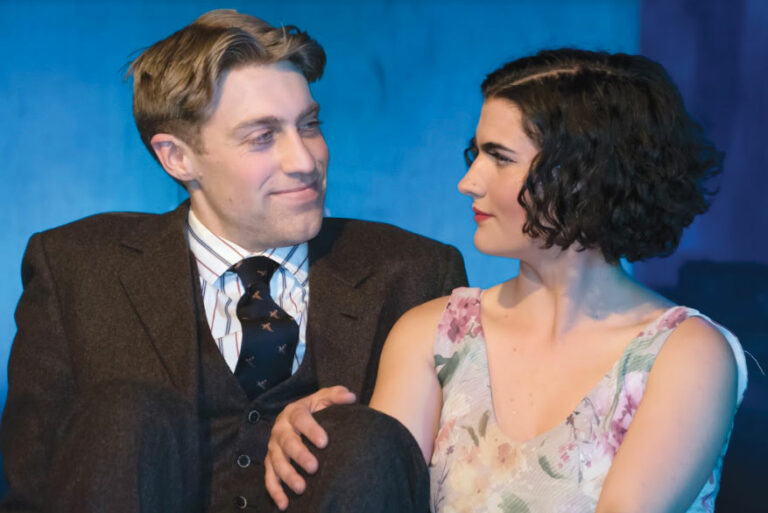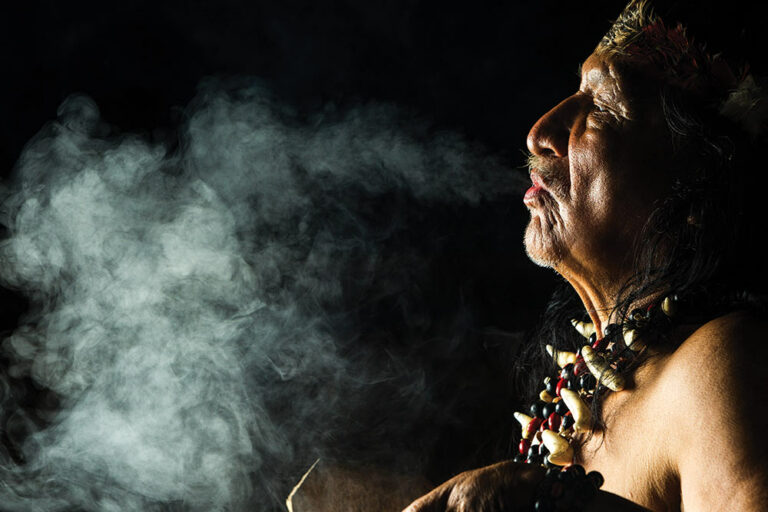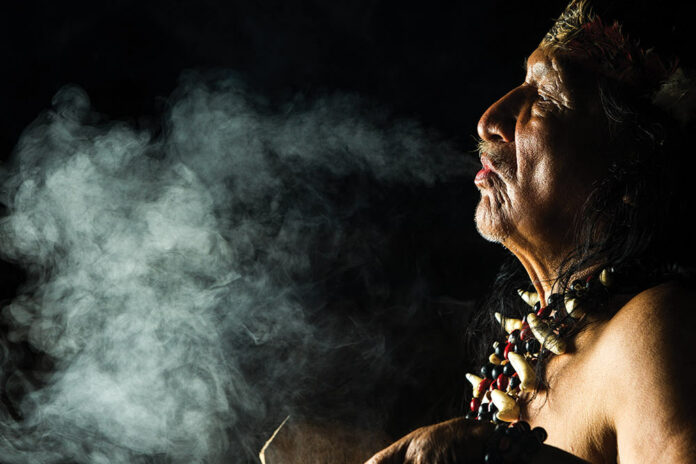By Bill Smith
The good old days were the good because you were young. As a rule, wherever you spent your 20s, the memories you made are precious and enduring. I was lucky. I made mine in the Bay Area in the 1990s: affordable rents, barbecued oysters on Drake’s Bay, biking over the bridge to the Marin Headlands or over to Sausalito for the ferry ride back to The City. A super beef-tongue burrito at La Cumbre cost less than $4 and Capp Street Project was on Capp Street. For a time, you could smoke in bars, restaurants and cafes. That was also the last time I took psychedelics—a magical day amidst the undulating redwoods of Muir Woods.
I thought I had left those days far behind me until a crisis loomed and I knew I needed to make some adjustments fast. My son was going off to college, my cannabis-addicted mother was going off the deep end, and I really had to quit smoking cigarettes. I had just finished Michael Pollan’s new book on the healing power of psychedelics, How to Change Your Mind.
I figured that a guided psychedelic experience could provide the quick jolt of therapy I needed, so I contacted a local shaman who worked with ayahuasca. The irony of scrambling my brains with a hallucinogenic DMT concoction from the Amazon to unscramble my comparatively cushy American life is not lost on me. But my insurance deductible puts regular therapy out of reach.
Alan Watts said this of the psychedelic experience: “If you get the message, hang up the phone.” I honestly don’t recall any message from my drug-induced 20s. I’m not sure if I even hung up or just hit “hold.” But I was about to pick up that phone again. Only now I wasn’t a carefree kid with most of his unexplored life ahead; I was a stressed-out 52-year-old single father with most of his unexamined life behind him.
Two weeks before my ayahuasca “sit,” I got instructions for how to prepare: “Rest, reflect on your intention, walk easily and eat whole foods—no red meat, alcohol, marijuana or other drugs. Consider lowering or avoiding coffee, sugar and salt.” The hardest thing for was to cut back to one cup of coffee a day.
I wasn’t surprised that marijuana was on the prohibited list. I started smoking marijuana in high school, but I’d stopped in college. The reason it took me even that long was that I was too intoxicated to notice how dull-witted, unproductively introspective, isolated and boring it made me. What’s surprising, in retrospect, is that I ever started smoking marijuana at all. I was raised by a “stoner,” which is to say, I raised myself. And, after a lifetime of smoking marijuana, my mother was the same emotionally stunted, rage-filled, paranoid narcissist she was when I was a kid.
So, as far as I’m concerned, there’s no message to be gotten from cannabis. There’s nothing on the other end of that line. That the shaman and “Grandma Ayahuasca” frowned on it made sense to me. If you’re looking for clarity, insight and growth from one drug, you should first step out of the paralyzing fog from another.
How my son turned out the way he did is beyond me. I was going to miss him when he left for college, but I was unprepared for exactly how much until I returned home unexpectedly one night recently, and found the aftermath of a teen party.
Popcorn and tortilla chips were scattered on the sofa and floor; two half empty bottles of Coke and ginger ale with their caps off sat on the coffee table, along with a half-eaten pan of brownies. Uh-oh. I took a bite.
It was pure brownie.
Who is this kid? When I was 16 I was climbing out my bedroom window to take LSD and drink and smoke anything and everything I could get my hands on. And now my own son wasn’t even having interesting parties when Dad was away. As I chewed on the brownie, it hit me how integral my son is to my identity. I’m going to miss the boy when he goes off to school in a way I hadn’t missed anyone since my father died.
Well then. After two weeks of minor deprivation and self-reflection, I arrived at the gathering place: a basement rec room in the basement in a subdivision. Most of the 15 other “sitters” seemed to be in their late 30s or early 40s. All were white. As we waited for the shaman we chatted. It seemed like half the group was in tech, the other half was in art. Half had money, but little meaning, and the other half had meaning, but little money. Only three of us seemed to have a profound need for healing: a recovering heroin addict, a man with obvious mental illness, and a woman who just got diagnosed with a death sentence in the form of Huntington’s Disease. The rest of the group was like me: the walking wounded.
When the shaman and his wife arrived they introduced themselves by their actual names and then by their shamanic names. We were in their home. They trusted us, we should trust them. He had taken ayahuasca more than 2,000 times. They explained what to expect with the “medicine,” how the visions were a gift from the plants’ spirit they called “Grandmother.”
The experience was visceral, physical and intellectual. It will connect you to your body in new ways. For the first 20 minutes after drinking the tea, there will be nothing.
Then the visions will begin, as if a switch was flipped. We were told, don’t fight it. Let Grandmother guide you and you will learn what you need to learn, though not necessarily what you thought you needed to learn.
A prayer was sung, sage and herbs were smudged, and the seekers, one by one, went before the shaman. Each sat or kneltkneeled and made some blessing while he stared into their eyes and measured out a portion of the ayahuasca, blew on it rapidly three times and then handed them the cup. When it was my turn I downed it without hesitation. It was viscous, thick and pulpy and tasted like licorice. Not unpleasant. I then returned to my spot and waited and watched.
The Shaman drank a big cup of tea and then his wife turned the overhead lights off. The room was candle-lit and the Shaman went around to each of us with his eagle feather. He touched the feather to our heads and shoulders, and waved them about our bodies. I noticed he spent a little extra time with the Huntington’s woman, the man with mental illness, and the heroin addict. When he returned to his seat, he began beating on a drum and singing. I guessed it was Quichua. It was rhythmic and powerful. His wife then joined in with harmonies, and it became so ethereally beautiful that I almost cried. Someone blew out the candles and we were left with only the moonlight, smoldering sage and the shamanic singing to guide us.
The purging started with the artist to my right. He doubled over, convulsed, and spewed a mighty torrent. I was worried the little bucket would overflow, but as quickly as he started, he stopped. I was surprised the sound didn’t gross me out. It didn’t even make me queasy. And there was no nausea-inducing smell. A benefit of the diet, no doubt. The vomiting then moved around the yurt like the fountains at the Bellagio. I stifled laughter, shut my eyes, and the visions began.
Geometric patterns shot across my eyelids until I was swimming in them. I felt a kindness welling up, some entity entering me. Grandmother! The visions were intense, but my ego, the “I” in my narrative, never completely dissolved. This was fine with me. Grandmother was kind. Her lessons had such a gentle wisdom that I spent much of the night softly laughing.
First she “looked” at me and gave me a quizzical smile: “You are fundamentally a happy person! Deep-down you are happy.”
“Really?” I thought.
And she smiled and shook her head in bemusement: “You seem to feel the need to pay for that happiness with being unhappy? That’s so funny! You don’t pay for happiness with misery! You pay by enjoying it! By sharing it!”
Then she took a tour around my body, racing like a child through a new house who opens up every door to peek inside each room. She would occasionally stop and I would notice—heart and beat; lungs and breath; she opened every door and bounced on every bed and sofa. When she was bouncing around my abdomen, I noticed a pain in my shoulder from my arthritis. She then bounded up to the pain, and as she explored my shoulder, the pain quickly and gently melted away. Same with my tortured knee. I recall wondering if DMT or the other chemicals in my body at the moment had anti-inflammatory properties. But even though I was making a more clinical evaluation than your typical mystic on potent drugs, I still said, “Thank you” to Grandmother. Whatever I chose to call it, this was powerful medicine.
“I am blessed!” was the next lesson from Grandmother. This message was, again, delivered with seeming wide-eyed wonderment and boundless love. This wasn’t guilt over my white, male privilege. It wasn’t nearly so rational or abstract as that. I actually felt these blessings: I had a comfortable home, a remarkable son, good friends, a creative and supportive community. My life was abundant with meaning. And again, gently, she pointed out the absurd calculus I made in paying for these blessings with guilt and self-loathing. Deserving or not deserving was not a part of the equation. You pay for your blessings by honoring them, by sharing them, by tending to them. But what does honoring your blessings look like? Is it as simple as keeping the house tidier? Unclogging the sink in a timely manner? Not chastising the boy when he spaces out and drops his wet towels on the floor eight inches from the laundry basket?
“That’s a start,” came her reply. “I think I could manage that,” I thought.
The final two lessons were simple and quick. They, too, involved reframing a problem that allowed the possibility for, if not resolution, then at least management. I saw my mother as a sad, confused, angry old woman who reflexively drove away the one thing she craved: love. “Have some pity on this old lady. She is powerless,” came the voice. “Yeah,” I agreed. And again, I felt it deeply. Seeing her in this light bypassed all my triggers and defenses and I was able for the first time ever to generate some sympathy for that woman.
Last came the smoking. “You can choose to have a cigarette, or to not have a cigarette. Just be sure it is you who is choosing. Say, ‘I am choosing to smoke this cigarette now, or I am choosing not to have this cigarette now.’” All of a sudden, I felt some agency in my relationship with tobacco. We actually practiced this a few times: “I choose not to smoke right now.” It seemed to work. A lot seemed to work with Grandmother holding your hand.
At some point Grandmother showed me a gate. It was of brown, twisted vines interwoven with hundreds of faces. Behind the gate was the real trial and transformation;, ego death and rebirth. I asked her if we were going through that gate. She smiled a compassionate smile and led me away: apparently not. Although I would have trusted the lesson that lay beyond it, I was relieved.
Throughout the evening the chanting and singing would come and go. It would pull us back, and refocus the visions, and remind us of our intentions, our “work.” At one point I sat up and opened my eyes. Sprawled all about the yurt were bodies; some prone, a few sitting upright, some twisting and heaving, some completely still. It occurred to me that if someone walked in here they would think this no different from a nineteenthan nineteenth century opium den. How would anybody know that this mass of shivering, twitching, writhing humanity was working on healing intentions and not just taking a holiday from the barely tolerable misery of modern life?
It’s hard to say if or when I awoke, because it’s hard to say if I ever slept. It seemed to me that the visions traversed both realms and blurred the distinction between my sleeping and waking self. At last I felt Grandmother had taken her leave of me and I sat up and looked around the yurt. It took me a moment to be sure that it was dawn coming through the opening in the center and not the moonlight. There were only two other bodies left Everybody else had gone back to the heated rec room.It was cold. So I bundled up my blanket and pillow and headed toward some warmth. In the rec room, I found a spot on the floor and promptly fell asleep.
Later when I was driving home, Ihome I felt like I was returning from summer camp. We had all hugged each other goodbye with a warmth that was astonishing considering we spent less than two days together and I couldn’t tell you a single one of their names. During the ride back home I chose to not have three cigarettes. I chose to have one. And I enjoyed the hell out of it.
Later that evening I found the boy reading in bed. He gave me a “Hey Dad,” without looking up from his book.
“You know, we are really fortunate.”
“Yeah.”
“We are, for lack of a better word, ‘blessed.’”
He cocked his head.
“We have a nice home, we have plenty to eat, we have an amazing community. And it’s not a question of whether we deserve these blessings or not, it’s our job to . . . honor them.”
“OK . . .
“Sometimes we feel like we have to pay for them by not acknowledging them or by not taking care of them properly, but that’s silly. We should tend to our blessings.”
Now his book was completely down, and he was looking at me as if there was some joke he wasn’t quite getting.
“We should, you know, tidy up more, do the dishes after dinner, put away our clothes.”
An audible sigh escaped from his lips.
“For a second, I thought you’d joined some Christian cult,” he said. We laughed, each honoring, in our way, the blessing of the other.
It’s been four weeks since my session with Grandmother. I still smoke, but I do it deliberately. I “choose” to have eight to 10 cigarettes a day. I drink one cup of coffee in the morning and I keep the house a bit tidier than before. I am grateful for a son who has not dulled himself with marijuana, and more forgiving toward a mother who has.
Bill Smith is a pseudonym. The author is a public educator and former Bay Area resident.













